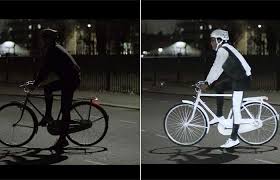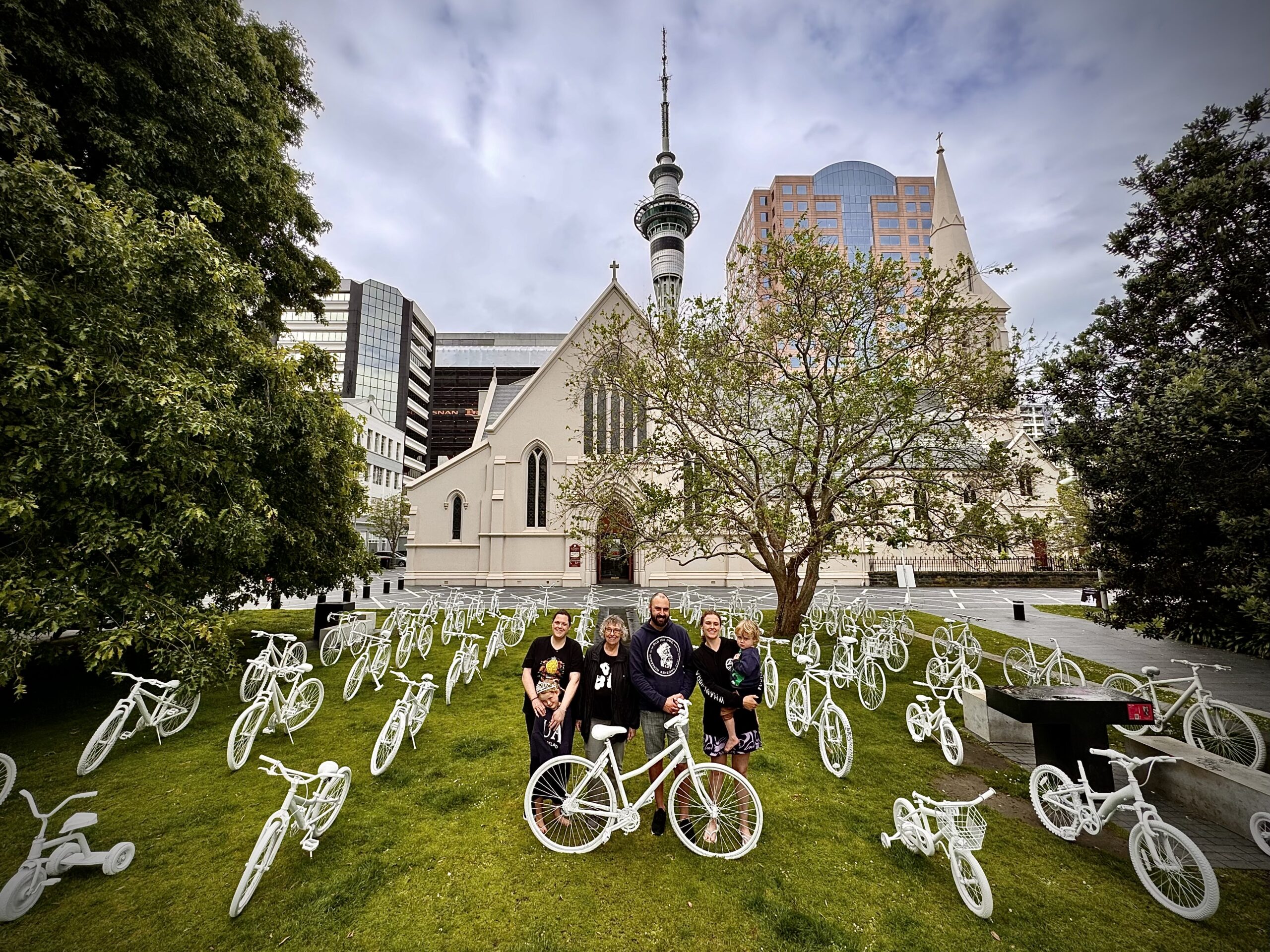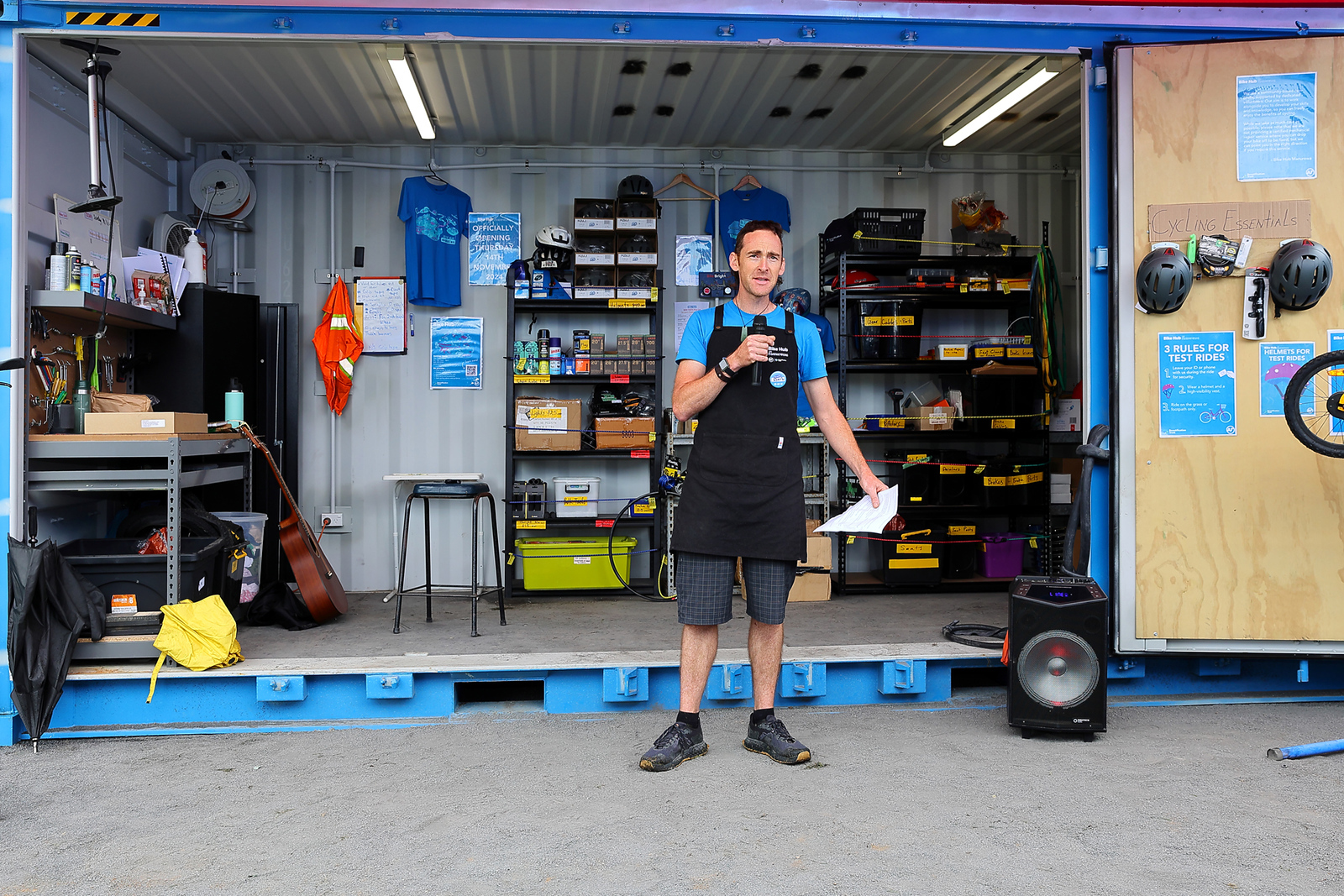There’s been a bit of excitement in the last few weeks about the latest shiny new toy in the armoury of bike-safety gadgets. On March 31, Volvo announced the invention of something it calls “LifePaint” – essentially glow-in-the-dark hairspray – an invisible, washable paint that can be applied to you, your bike, your clothes, anything really, which lights up when caught in the beam of a vehicle’s headlights.
Despite the timing, this was no April Fool.

It’s pretty unobjectionable at first glance. Nifty. Thoughtful, even. And, to be honest, fun! Imagine wearing this at the next Bike Rave? Plus, who’d dispute the value of night-time visibility, especially at this time of year? (Yo: check your lights; get some lights; discount here!)
But the critique was swift and pointed. “It’s a smoke screen and this time it’s sprayed on,” wrote Mikael Colville-Andersen of Copenhagenize. The satire was speedy, too: rude suggestions for things you could sneakily spraypaint on all sorts of other things; brainwaves for new variations on LifePaint…
.@erik_griswold This Krylon #LifePaint is applied to phone screens and prevents #DistractedDriving. pic.twitter.com/2us4y4QUgA
— Figueroa For All (@fig4all) March 31, 2015
Three weeks on, debate is still rumbling about whether LifePaint is a boon for cyclists or a marketing stunt that veers into victim-blaming (what next: glow-in-the-dark paint for pedestrians?) – or, as Cycling Weekly concluded, totally overblown and not all that effective anyway.
For our money, the best take so far comes from Vancouverites Chris and Melissa Bruntlett, of ModaCityLife.
Their article in the VanCity Buzz takes on the slew of “safety” products for people on bikes that seem to have been “designed through a windshield, based on anecdotes and conjecture rather than actual science”, and makes the point that it’s not scientific breakthroughs we need, but political ones:
These shiny techno-trinkets are distracting us from the more meaningful and substantive conversations needed to make cycling safe and desirable for people of all ages and abilities. The good news, however, is based on decades of statistical analysis in modern cities around the world; we already know exactly what these proven bike safety measures are, and they’re not rocket science.
As Chris and Melissa see it, these one-off products – while a nice gesture from companies like Volvo – put the onus on individuals while taking our attention away from what we really need and who really needs to provide it: safe, integrated streets that work for all users, built by our shared public utilities. Not to mention, all this chatter about gadgets for individuals on bikes changes the subject away from the massive double standard around safety on the road:
When a car company throws its marketing weight and budget behind a gimmicky, glow-in-the-dark spray, it only serves to expose the glaring double standard that exists. If they truly practiced what they preached, automobile manufacturers would stop making dark coloured cars, start requiring motoring helmets, equip their product with external airbags, and warning labels about the dire side effects it has on public health. And they’d stop cramming cars with more and more technology designed to distract their operators (Wi-Fi, DVD players, Bluetooth, GPS, etc.).
Worse, these gimmicks, while ostensibly promoting “safety”, subliminally underscore the idea that riding a bike is above all a terribly dangerous thing to do.
Riding a bike for transportation is the single easiest thing you can do to increase your health, wealth, happiness, quality of life, and the quality of the city around you. These benefits far outweigh the risks (by as much as 20:1), and any messaging to the contrary is wholly irresponsible. Separated space for cycling makes it all the more secure and accessible, and pushing gadgets, protective gear and special clothing is a half-baked substitute, none of which have been proven to make anyone any safer.
Melissa and Chris’s conclusion: in the end, while these toys are certainly fun to play with, and not without usefulness, we need to return the discussion to where it belongs, fair and square – a fair deal for all of us. We all pay for our public streets and we all deserve travel space we can use safely.
…underlying this issue is the optimistic belief that, if we throw enough technology at a problem, it will simply go away. In this case, participation in an insatiable consumer culture by a handful of people somehow takes precedence over a collective investment in streets that work for everyone. We must tell our elected officials that isn’t good enough. After all, the only “modern safety solution cyclists have been begging for” is a protected bike lane. Let’s build them. Everywhere.
We’ve cherry-picked some great bits from the article, but the whole thing is worth the read – head on over and check it out. (And as a chaser, may we suggest Melissa Bruntlett’s latest post about biking in the city with children, which explains how visibility is not the problem – nor is paint the solution).




